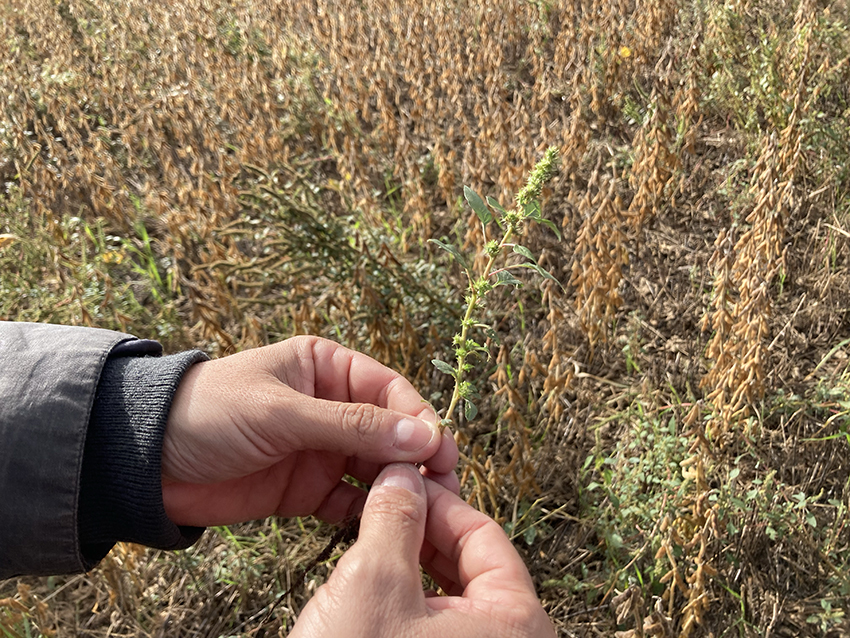
The context of my research is the implementation of the neo-extractivist model of transgenic agriculture in Argentina since 1996, when the first GM (genetically modified) crop was released for commercialisation in Latin America: the 40-3-2 Roundup Ready soybean from Monsanto (today Bayer), resistant to the herbicide glyphosate.
In my research, this model is seen as a continuation of the terricide¹ that began with Spanish colonisation, and it exacerbates Latin America’s condition as an exporter of Nature, incited in 1492.
My research takes Amaranth, a plant native to the Americas, as a companion: its seeds were preserved by indigenous peoples, despite Spanish colonizers’ prohibition, and today it is the most paradigmatic glyphosate-resistant weed for the transgenic agriculture model. Transgenic agriculture promised to exterminate weeds, but amaranth was the first spontaneous vegetation to develop resistance to agrochemicals, growing in GM plantations. Currently, it covers over 25 million hectares. Perhaps it is, as the scientist and environmental activist Andrés Carrasco called it, America's revenge.
I explore the intelligence and political agency of Amaranth, whose growth intervenes, naturally and politically, in the nucleus of transgenic agriculture’s neocolonial and ecocidal model. I trace nature’s wisdom and the cooperation and reciprocity between Amaranth and other spontaneous vegetation as forms of intelligence. Therefore, I aim to learn from agroecology and indigenous knowledge and explore how we might collaborate and conspire² politically with plants. I investigate how art practices can contribute to the construction of buen vivir³.
I seek to develop new perceptivity and attentiveness to plants without the use of technologies. I want to become slow to recover the attention, perception, observation and listening skills humans once had, but that contemporary society’s accelerated and alienated life has taken away from us. I follow the interaction of different species of amaranth with local farmers, agroecologists, biologists, critical scientists, activists, and indigenous peoples, but also representatives of corporative transgenic agriculture.
2Myers, Natasha, “The world to come : art in the age of the Anthropocene,” Samuel P. Harn Museum of Art, University of Florida, 2018, p. 55
3Good Living: concept in collective construction. Old-new paradigm, based on the indigenous concept of Sumac Kawsay. Eduardo Gudynas and Alberto Acosta explain that Buen Vivir looks to Indigenous knowledge to seek alternatives to Western development. Unlike the neo-extractivist model, it recognizes the rights of nature.



